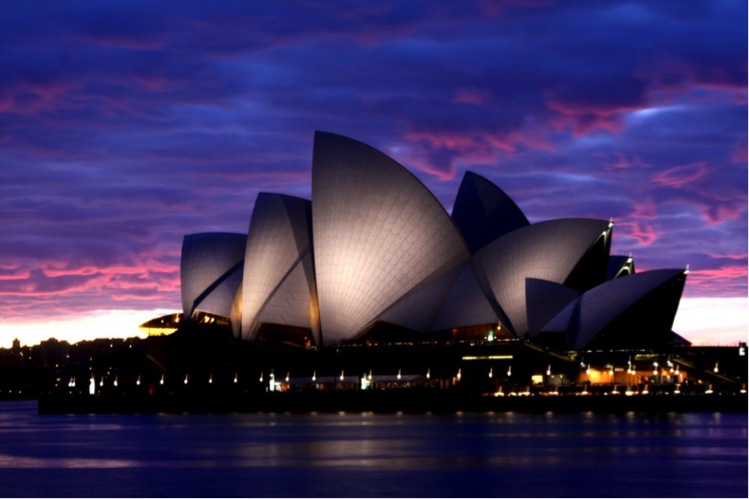America’s
Most Iconic Architect
Every great architect is -- necessarily -- a
great poet. He must be a great original interpreter of his time, his day, his
age. –Frank Lloyd
Wright
Throughout the
semester, in our Contemporary Design Icons class, I have been faced with many
questions about the topic of design icons; what is iconicity, what makes an
icon, and who can be considered iconic.
As we discussed more about the different architects that could be
considered a design icon, I couldn’t help but to think about the first name
that came into my mind, Frank Lloyd Wright.
Frank Lloyd Wright has been an architect that I have known for a long
time. Growing up in Chicago, I was
surrounded by many of his houses in nearby cities. I remember learning about him in my undergrad
degree and how much of an innovator he was in the architectural world. It
wasn't until I visited one of his houses on a design trip that I truly grasped
the magnitude of his greatness. While visiting one of his houses in Oak Park,
Illinois, I was able to understand how he designed and the amount of detail he
put within his work. Looking at the craftsmanship of his work was something
very inspiring to me. His interiors were
cohesive, everything seemed to have a place and fit perfectly. He went
above and beyond to try to think about the way his clients would use the space. In this way, Frank Lloyd Wright can truly be
considered an icon because of the way he designed his buildings with the end-users
in mind.
Frank Lloyd
Wright is often referred to as “the greatest American architect of all time”. Of the one thousand buildings he designed,
about five hundred of them were built. Throughout
his career he designed several iconic American buildings. Among the many buildings he built, some of
the more famous include Falling Water, Robie House, and the Guggenheim
Museum. While he designed both public
and private spaces, he is often more known for his residential architecture. Through all of his designs, he manifests the
principles of simplicity, unity, and respect of nature.
Frank Lloyd
Wright was one of the most well-known architects of his time. Within Frank Lloyd Wright’s career, he built
homes, museums, office buildings, hotels, churches, and more. However,
Wright was probably best known for his residential architecture. Throughout his career, Wright’s style was
constantly evolving. In the early part
of his career, he designed houses in a style that was known as the Prairie Style. He
eventually began designing his building in a style known as “organic
architecture”. As he states, “by organic
architecture I mean an architecture that develops from within outward in
harmony with the conditions of its being as distinguished from one that is
applied from without." Within his
designs, Frank Lloyd Wright aimed to make his buildings extensions of his
site.
During his
lifetime, Wright built many beautiful buildings, however many of his designs
were also built after he passed away.
Among his designs that were built after he passed away include the
Massaro House. This house was inspired
by drawings created by Frank Lloyd Wright that were never built. The
Massaro House is located on the privately owned Petre Island in Lake Mahopac,
New York. The house is named after its owner Joseph Massaro. In 1949, Wright received a commission from an
engineer named A. K. Chahroudi to build a house on Petre Island. Chahroudi
later stated that during a lunch meeting he had with Wright and Edgar Kaufmann,
the owner of Wright’s celebrated Fallingwater, the architect told Kaufmann:
"When I finish the house on the island, it will surpass your
Fallingwater". In many ways, the Massaro House was very similar to Falling
Water. It shared characteristics such as
the cantilevered roofs, horizontal lines, and the site built around water and
extending from the site. Wright worked on the design of the Massaro
House for around three months. However, the project was cancelled when
Chahroudi realized he was not able to afford the project envisioned by Wright. Instead, Wright designed a 1,200-square-foot
cottage for Chahroudi for the island. The house was among Wright's numerous designs
for private houses. Although he was not
alive to see the Massaro House built, his legacy lives on through the
design.
Frank Lloyd
Wright was an architect that clearly focused on the end-user within his
work. Whether it was buildings built
during his lifetime or after his lifetime, all have Wright’s vision and
trademarks. Unlike many architects, he
emphasized both the interior and exterior relationship. Throughout the semester, I have come to
realize that a design icon is someone who is unique and builds environments
that reflect the wants and needs of the end-user. In my opinion, Frank Lloyd Wright is one of
the most iconic architects. Through his
unique style, he was able to revolutionize architecture not only in the United
States but throughout the world.



























